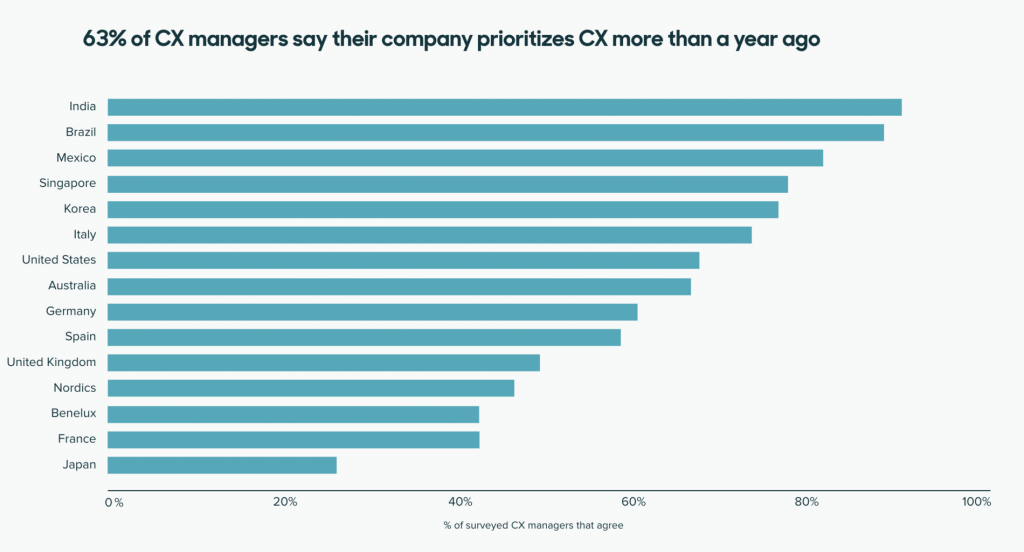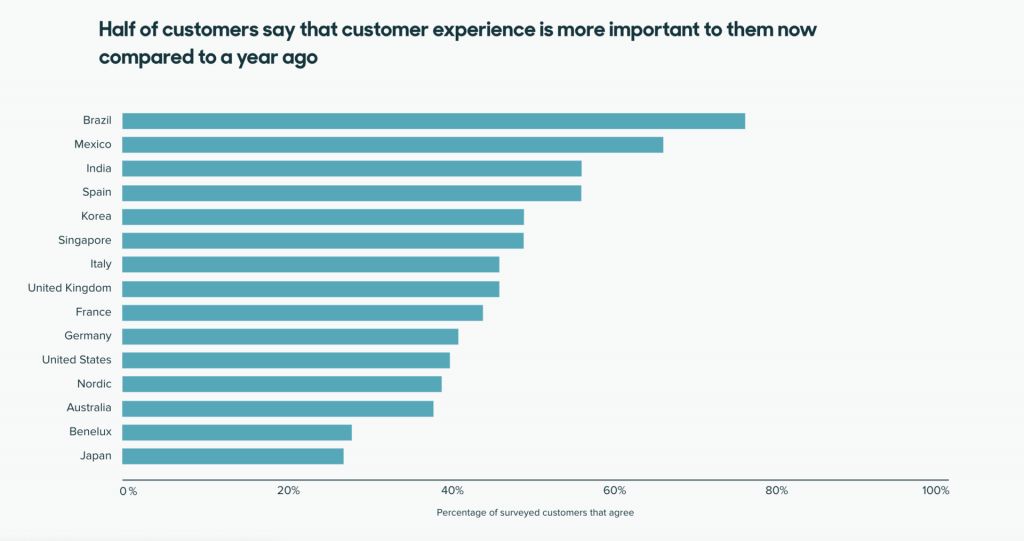We are well into the age of digital transformation. Countless companies around the globe have experienced some digital transformation - in one way or another, over the past two years. In turn, customer expectations have risen, and companies of all sizes have to migrate most (if not all) critical communications to the cloud.
If companies wish to foster good customer experiences that match rising customer expectations, business leaders need to leverage CCaaS tools; ones fueled by powerful CRM (customer relationship management) system integrations.

Zendesk 'What is Customer Experience?' Survey
That is merely one side of the coin, however. There is still another principal factor, end-users. The end-user experience gets greatly enhanced by tools designed to; help customers authenticate themselves for quicker query resolutions, for example.
If the end-user experience is solid - chances are, it will be an ideal one for the customer as well. It is even key to retain - the advantages extended by CCaaS/CRM technologies are handed down to both customers and end-users like contact center agents.
Agents Should Know 'Why' a Customer is Calling
Here is where the 'true' unified nature of CCaaS/UCaaS systems comes into play, as these systems can pull data from multiple sources to assist agents with various tasks. When they utilize CCaaS tools to help customers, having access to the rich customer data CRM systems offer up, can help paint a more accurate picture of consumers and their needs.
In a 2018 Pegasystems Inc. study of nearly five million hours of live desktop activity from operational support employees, it appeared that the average employee toggled between 35 job-critical applications. But get this, they did that more than 1,100 times daily.
Though this number has likely seen a welcome downward spiral thanks to the introduction of UC systems tightly knitted with most of the world's most widely-used software applications for business productivity. Providers are aware of this, too, and have designed some clever tools to help paint the most accurate customer picture.
So, in theory, when a customer calls, agents should know exactly their reason for calling. This is, indeed, one of the many perks of leveraging contact center CRM tools. Warren Levitan is Co-Founder and CEO of Smooch, an omnichannel conversation platform; which integrates with CRM players like Zendesk, Sparkcentral, Oracle, and Genesys.
In a 2019 Forbes interview; he said that the practice of customers repeating themselves due to poorly integrated/designed IVR and other technologies, make them mad, further elaborating:
“While starting from square one, every time you talk to someone outside of work would be ridiculous; that is exactly how most companies interact with customers, which is inefficient for the business and a waste of time for everybody.”
We have all experienced this phenomenon in some way over the past two years. When agents have access to tools that enable functionalities like one click-calling, the ability to update customer data in real-time, and advanced interactive virtual agents, they can handle almost any situation.
The Truth About CRM Systems for Agents
The truth is that CRMs were never really meant to become agent-centric tools used in their everyday toolbox. It was not even supposed to be a regular part of their tools for daily use. Today, the agent relies more on these tools, as I stated earlier - to deliver superior customer experiences.
According to research by Zendesk, companies are, though - rapidly adding tools to help them scale their operations, personalize conversations, prioritize employees, and meet customers where they are. Recent research there suggests that 75% of decision-makers say COVID has accelerated the company's adoption of digital technologies.
There are a ton of integrations available by some of the top CRM providers, ones designed by CRM powerhouse, Salesforce, built for contact management. Others dabble in this area, too, including Zoho and, you guessed it - Microsoft with its Microsoft Dynamics offering.
As CRM systems, are in essence, built to house consumer data for organizations in a single location, it has only made sense for the likes of Salesforce to align with Slack. It finalized the acquisition of the team collaboration app developer a few months ago. Slack and Salesforce now present a dynamic joint offering.
Microsoft and Oracle have similar capabilities, realizing the significant nature of delivering good customer and agent experiences. One of the many resulting benefits - ease of management, and no need for ongoing resources to do so. Implementation is often simple and can be done by someone with little to no technical knowledge.
As more contact centers move to the cloud, they will undoubtedly thrive on the flexibility they gain, and contact center management will soon realize that they crave even greater flexibility.
The Big Picture
Unified communications as a whole is a technology with the goal of platform uniformity. Removing silos. As customer demands rise, so does the need for tools built to help agents resolve customer queries faster and more accurately.
This could mean implementing IVR or voice authentication protocols to ensure agents have all the information regarding a customer when they call. There's is nothing more annoying than thinking you have selected all the right options, just to make to an agent who has to then transfer you to the 'right agent.'
Bringing CRM systems into a single unified system that has all the other tools agents use - just makes sense. It is not a novel concept to suggest that an agent should have one screen for all that, software that contains the information and tools they need to serve customers.

CRM systems today are even more eminent in the workplace, as more agents work remotely and need access to said tools. Contact center agents should always have access to a single system - not multiple for the sake of saving a few bucks.
Investing in omnichannel infrastructure will be one crucial piece of the future of work that many organizations will be forced to make over the coming years. They will have no choice, as the thirst for digital revolution lives on by way of customers and employees seeking more flexible ways to 'get things done.'



